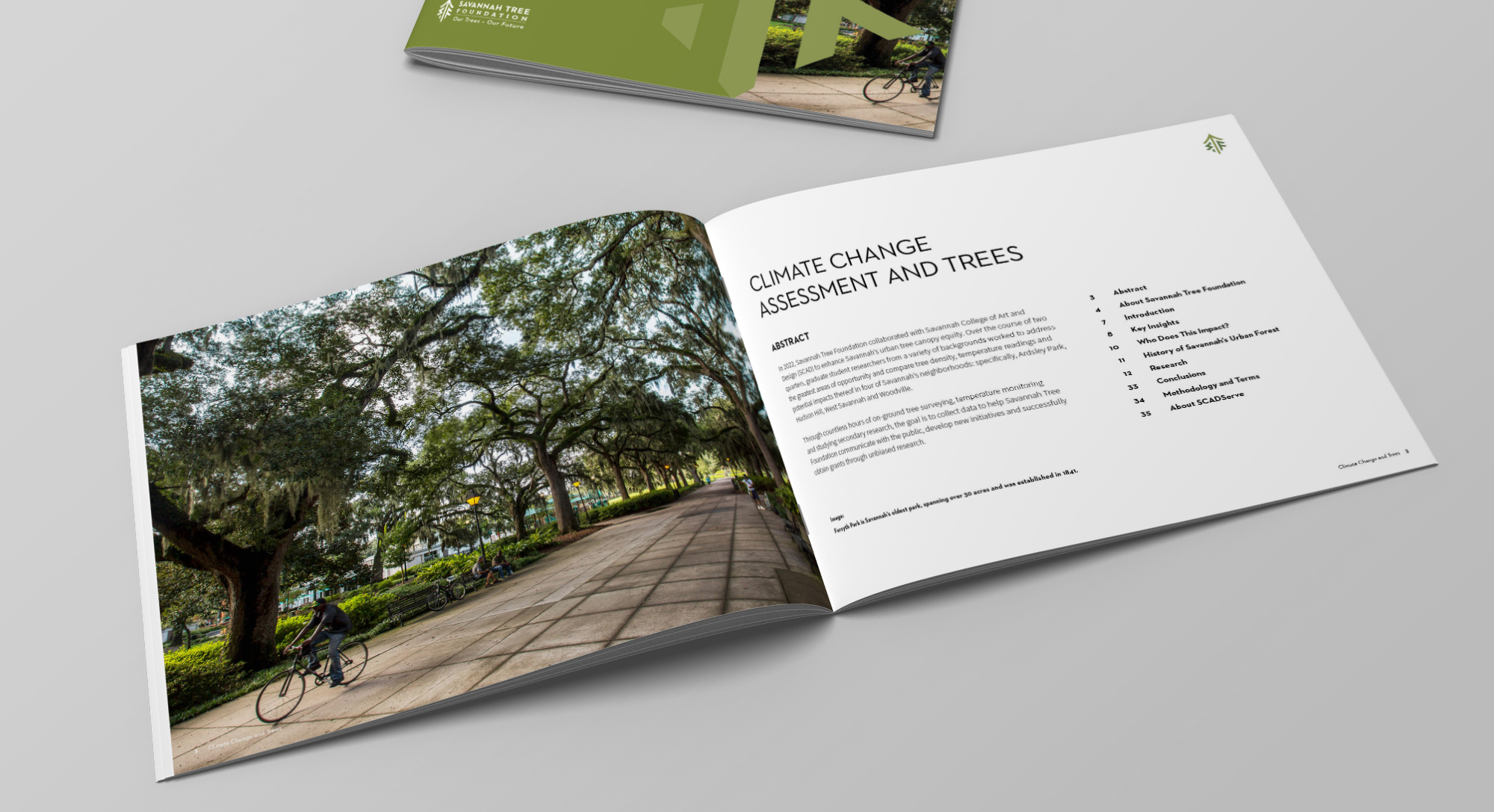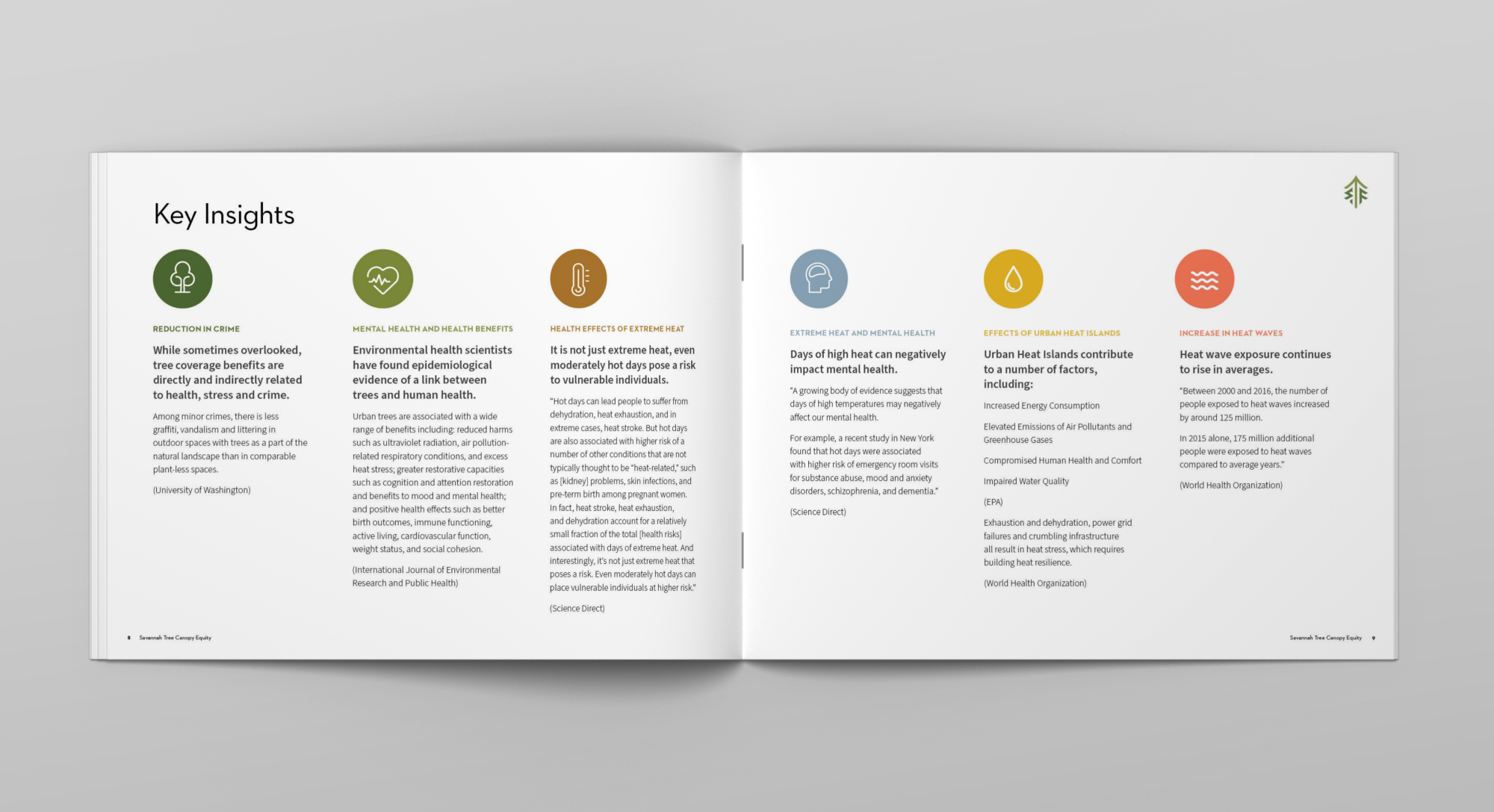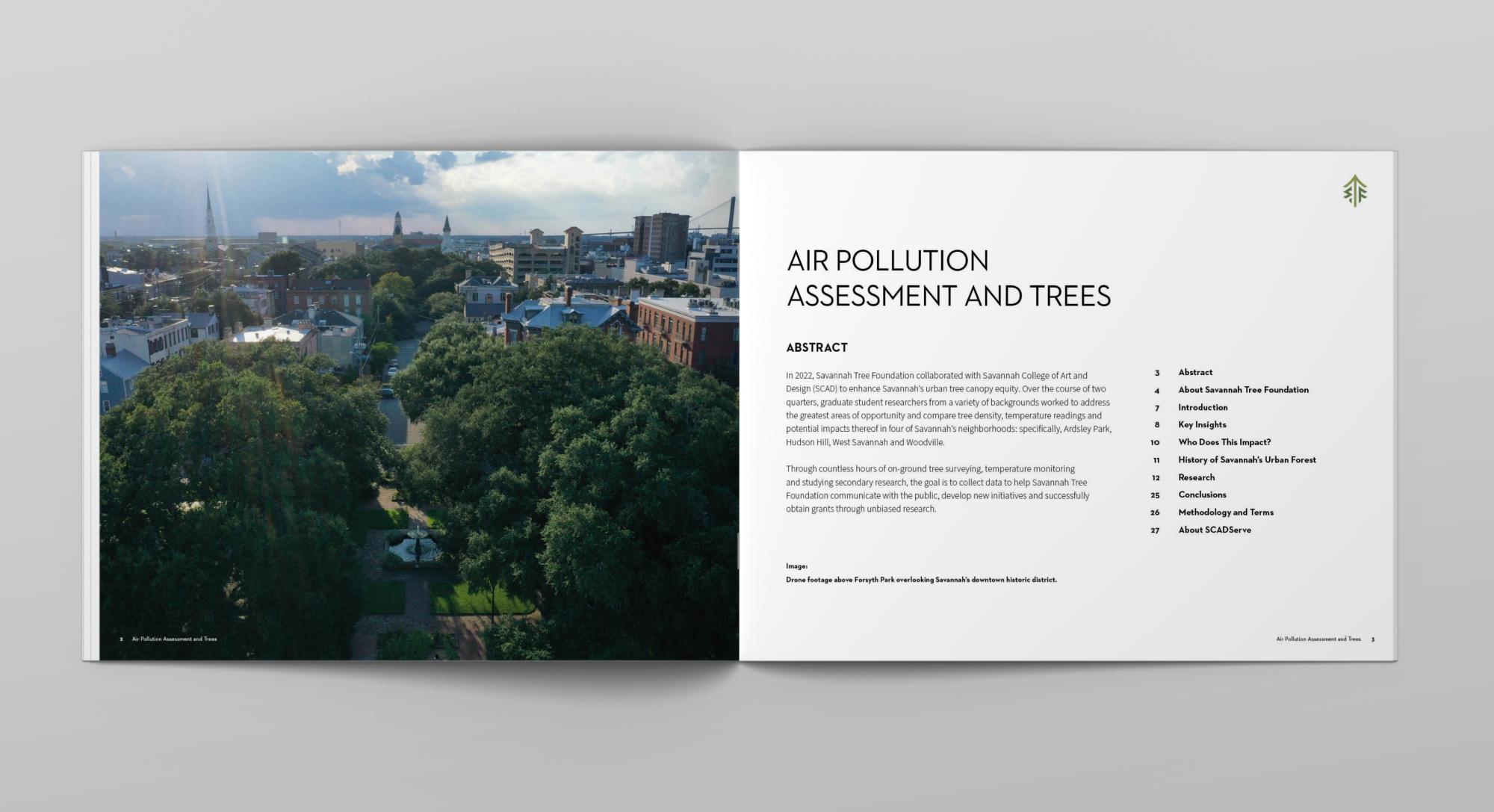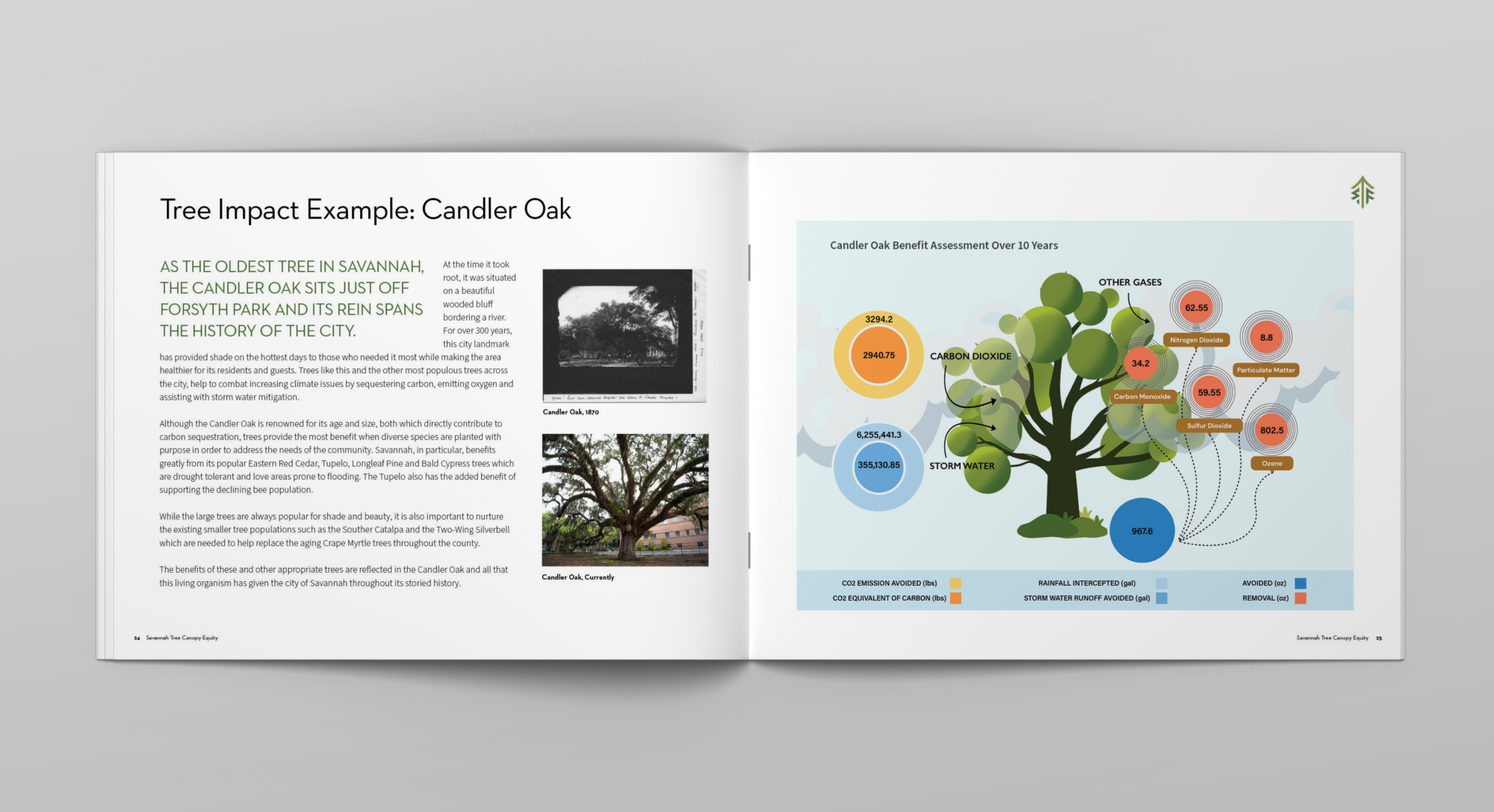Savannah Tree Foundation
Converting field research into actionable data For Tree Canopy Equity
Trees are important for Urban Heat Islands (UHI) because they attribute to reducing energy burdens, decreasing heat related health issues and improving the quality of life for residents. Other benefits of trees include improving air quality by removing air pollution, improving storm water retention and buffering noise pollution.
Our research shows low-wealth communities in Savannah are experiencing up to 30 degree temperature variations due to a lack of tree canopy coverage in their neighborhoods. Peak temperatures in the summer can be upwards of 100 °F. To support Savannah Tree Foundation’s efforts in ensuring tree canopy equity, GOOD560 gathered and synthesized data, research and experiences. Based on our research SCAD planted 200 mature trees in the neighborhoods surveyed with less tree canopy coverage.
Watch the Round table discussion →
Our Process
-

Survey
Survey the tree canopy, temperatures and impervious surface data in the neighborhoods of Ardsley Park, Hudson Hill, West Savannah and Woodville to identify key factors for related to tree canopy coverage.
-

Compile
Conduct ethnographic research to better represent the views of the impacted communities in Woodville and Hudson Hill. Compile secondary research to understand the impact of Urban Heat Islands.
-

Share
Share findings with Savannah Tree Foundation (STF) and SCAD faculty to help them move forward with future projects, grant applications, community engagement and awareness.
-

Build
Create a compelling communication plan to convey the findings of our research with stakeholders to build collaborative capacity for a comprehensive and equitable Savannah tree management plan.
Our vision was to act as an unbiased bridge between the community and stakeholders by employing compelling and engaging data shown through a human-centered context. Through research and analysis, our goal was to increase community health and wellness in low-wealth communities in Savannah, and reduce energy burdens for these communities, specifically in the face of increasing extreme heat events due to a changing climate.
We introduced a new method for quantitative temperature data collection. Onset HOBO weatherproof temperature devices were used to provide us with comparative data of varying locations for longer durations of time. These devices were placed inside of a shell to moderate the sun intake and placed in trees to collect day-to-night (24-hr) temperature readings.
Trees naturally act as a conduit for absorbing water. Where rain falls on paved surfaces, a much greater amount of runoff is generated compared to runoff from the same storm falling over a forested area. These large volumes of water are swiftly carried to our local streams, lakes, wetlands and rivers and can cause flooding and erosion, and wash away important habitats.
Carbon sequestration is one key insight that contributes as a benefit in areas with dense tree coverage. Lack of trees can cause many health issues due to polluted air. Trees help remove carbon dioxide from the air, store carbon, and release oxygen into the atmosphere. One large tree can provide a day’s supply of oxygen for up to four people.
Our Solutions
Once we had all of this data and information, a big question was, “what do we actually do with the data and how do we communicate to various stakeholders?” We formed a multi-level strategic approach to connect with individuals, community members, businesses, and government officials. By taking a holistic approach, we were able to deliver compelling insights to everyone involved. These solutions included social media strategy, environmental signage for the Candler Oak, illustrated maps and data visualizations and a series of white papers.
download white paper →
Our white paper reports provided the primary data, secondary research and an in-depth analysis with key insights. Each report was focused on a key area of research including: tree canopy equity, climate change, noise buffering, storm water retention and air pollution.






The Results
The most impactful aspect of this project is seeing research that led to an outcome. Based on our research and the collective work of SCAD’s administration, SCAD is planting 200 trees in the neighborhoods our GOOD560 class researched. More about the initiative can be found here. We worked directly with the neighborhoods to ensure we were planting the right trees in the right place to help provide much needed shade and mitigate flooding.
See the Press Release→
The university’s SCAD SERVE initiative empowers students to listen to the needs of its neighbors and local leaders, and to create meaningful design solutions that improve quality of life. Student volunteers came to help plant trees.
GOOD560 Professor Satyakam Sharma Project Team: Vivek Gupta, Sustainability + Jewelry M.A. • Yushan Chen, Service Design M.F.A. • Kanchi Parekh, Design Management M.A. • Riley Shelton, Design for Sustainability M.A., Amber Francis, Service Design B.F.A • Ankit Charturved, Design for Sustainability M.A. • Emma Covello, Design for Sustainability M.A.








